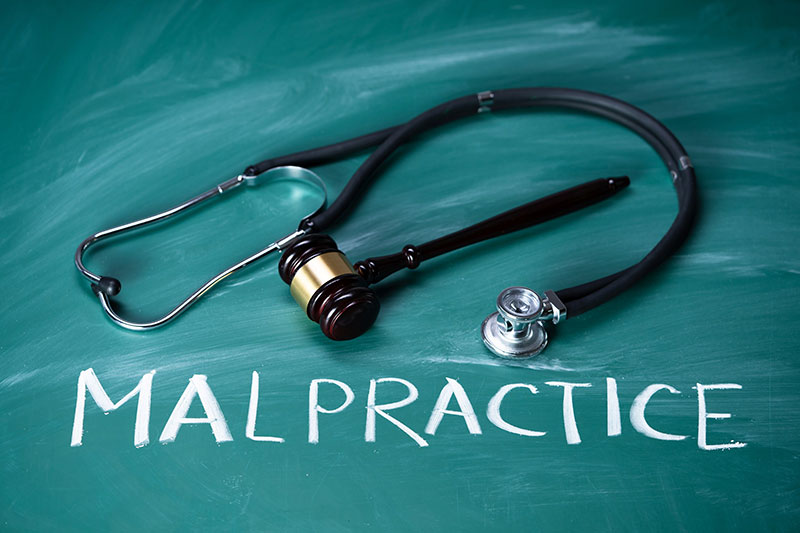In the backdrop of rising incidents of medical malpractice errors in the United States, medical record reviews are crucial for attorneys litigating medical malpractice lawsuits. A medical malpractice lawsuit is developed around the medical records. Medical records are the solid evidence to prove that the injury suffered by the plaintiff is due to medical malpractice errors. The harm suffered by the patient might be physical or psychological or both which depends upon the severity of the incident. Medical records services can ensure that proper evidence is adequately cited from the medical records for a successful outcome in the trial process.
Common Medical Malpractice Errors
Medical malpractice attorneys have to prove that there was a lack of delivery of standard care in providing treatment to the patient. We shall discuss some specific types of errors that can lead to medical malpractice lawsuits.
- Misdiagnosis or delayed diagnosis
A majority of medical malpractice lawsuits are based on misdiagnosis or delayed diagnosis. When a medical condition is misdiagnosed by the treating physician or if there is a delay in diagnosis, there is patient loss due to missed treatment opportunities. If the standard of care is conformed with, injury or death can be prevented. The key to proving medical malpractice claims is based on the comparison between the care provided by the treating physician and other competent doctors within the same specialty. The treating physician is held liable if a reasonably skillful and competent doctor under the same circumstances would not have committed the diagnostic error. - Medication error
Every year thousands of people are harmed due to medication errors. The error can occur at any time during the treatment i.e. from the initial prescription to the administration of the drug. The patient might get injured if the physician prescribes the wrong medicine and, in some cases, it can be fatal too. The most common medication errors are due to the wrong dosage of drugs administered to the patient. - Childbirth injuries
Childbirth injuries due to medical malpractice arise due to a physician or obstetrician’s negligence during childbirth or before. If a congenital disability or ectopic pregnancy is unidentified, it can harm the fetus or mother or both. Medical malpractice can be attributed to the physician’s failure to respond to the detailed distress or incompetency in using forceps or a vacuum extractor. - Surgical Errors
Any mistake inside the operating room leads to surgical errors. The injury can be due to the puncturing of internal organs, operating on the wrong part of the body, or leaving surgical instruments inside the body. The nursing staff’s negligence in delivering post-operative care can lead to complications like infection. - Anesthesia Errors
Medical malpractice arising due to anesthesia error is dangerous and often fatal. Anesthesia error might cause permanent injury, brain damage, or even death. Medical malpractice due to anesthesia errors can occur even before administering anesthesia. For instance, if the anesthesiologist fails to investigate the medical history for potential complications, a medical malpractice lawsuit can be filed.
Damages to the Plaintiff due to Medical Malpractice
- Pain and suffering
- Physical and emotional trauma
- Loss of wages
- Disability
- Death
Role of Medical Records Review in a Medical Malpractice Lawsuit
Medical records review assists attorneys in identifying the strengths and weaknesses of the case. It focuses on the injuries suffered by the plaintiff and aids in highlighting the relevant medical information about the lawsuit. By summarizing the critical areas of the medical records, attorneys can reconstruct the patient history from admission to discharge from the hospital. This discovery process involves critical thinking and clinical acumen by complying with coding guidelines.
In a medical malpractice lawsuit, it is mandatory to support the allegations of injury with medical records. Medical records give the following important data.
- Vitals: The comparison of the vital signs of the patient with the subsequent assessment of the vital signs. The variations will be documented which can be analyzed to know the medical condition of the patient at the time of admission.
- Chief complaint: This gives the principal diagnosis which shed light on the injury suffered by the patient. The causative factors and their relationships among medical conditions are examined to identify the principal diagnosis.
- Relevant physical findings: The clinical findings and diagnosis validation gives information regarding pressure injuries, internal bleeding, or respiratory failure.
- The past medical history of the plaintiff: Medical records capture the chronic condition of the patient which can be evaluated to know whether any treatment procedure exacerbated the underlying medical condition.
- Information on the recent surgery: This is vital to know whether a surgical procedure contributed to the injury suffered by the plaintiff.
- The status of devices or ostomies: It documents the presence and the status of all devices and ostomy sites. If there is any complication due to a device or a recent surgery, the medical encounters prove the same.
- Diagnosis/impression: This data represents the clinical findings and the medical necessity for a particular treatment procedure.
Documents Examined in a Medical Record Review
The term medical records encompass all the records and documents related to the care and treatment of the plaintiff. Following are some of the records requested by attorneys while litigating medical malpractice lawsuits.
- The medical records of the injured
- Facility records from the healthcare organization wherein the plaintiff received the treatment
- The written or electronic form of communication between the patient and the healthcare providers.
- Internal communication details involving the facility representatives and the attending physicians, especially in ER rooms.
Once these medical records are gathered, they are reviewed and the information is analyzed by medical records services. The following questions are also evaluated to ascertain that there was medical malpractice.
- Are there any inconsistencies in the medical records? This outlines what was conveyed to the family members of the patient and what was documented in the medical records. If there is any anomaly, the relevant portion can be investigated further.
- Is there any erroneous documentation in the medical records?
By examining these questions, medical malpractice attorneys presume that there were medical errors or occurrence of negligence.
Why Should You Outsource To Medical Record Review Services?
Medical records are quite extensive and reviewing relevant medical information can be a difficult task. If the medical records analysis is outsourced, medical malpractice attorneys can focus on the merits of the case for a successful outcome. Medical record review services include the following:
- Medical chronologies: Medical case chronology gives an accurate timeline of the plaintiff’s medical history. They are concise and provide unbiased or unopinionated facts. Attorneys can deduce the overall health performance of the plaintiff with the help of treatment flow documented in the medical chronologies.
- Timeline of key events: This reference document gives an overview of the treatments, procedures, and medication administered to the patient. The key events are pivotal in finding all the important events that explain the reason behind the ailment of the plaintiff and evaluating errors or medical negligence.
- Aberrations in the standard of care: Deviations from the standard of care are identified and highlight the medical issues that are not usual in a clinical setting. A medical record review company assesses whether a standard of care or treatment protocol is not adhered to while delivering the standard of care.
- Assessment of standard of care: Depending on the type of medical malpractice, the proof of a particular medical condition stemming from a specific action can be identified from the medical plan. Causation assessment helps to prove that there was negligence on behalf of the physician, healthcare staff, or the medical facility.
- Identifies mitigating factors: This sheds light upon the circumstances that can lessen the severity or culpability of medical negligence. For instance, if the patient had consumed a drug or alcohol that has the potential of lessening positive outcomes from a particular treatment, it will be highlighted to prevent loopholes in the case.
- Evaluate the severity of the injury: The prognosis and medical bills based on the timeline of the injury gives an insight into the severity of the injury. This evaluation allows attorneys to know the overall impact of the injury on the patient’s life and potential future earnings.




